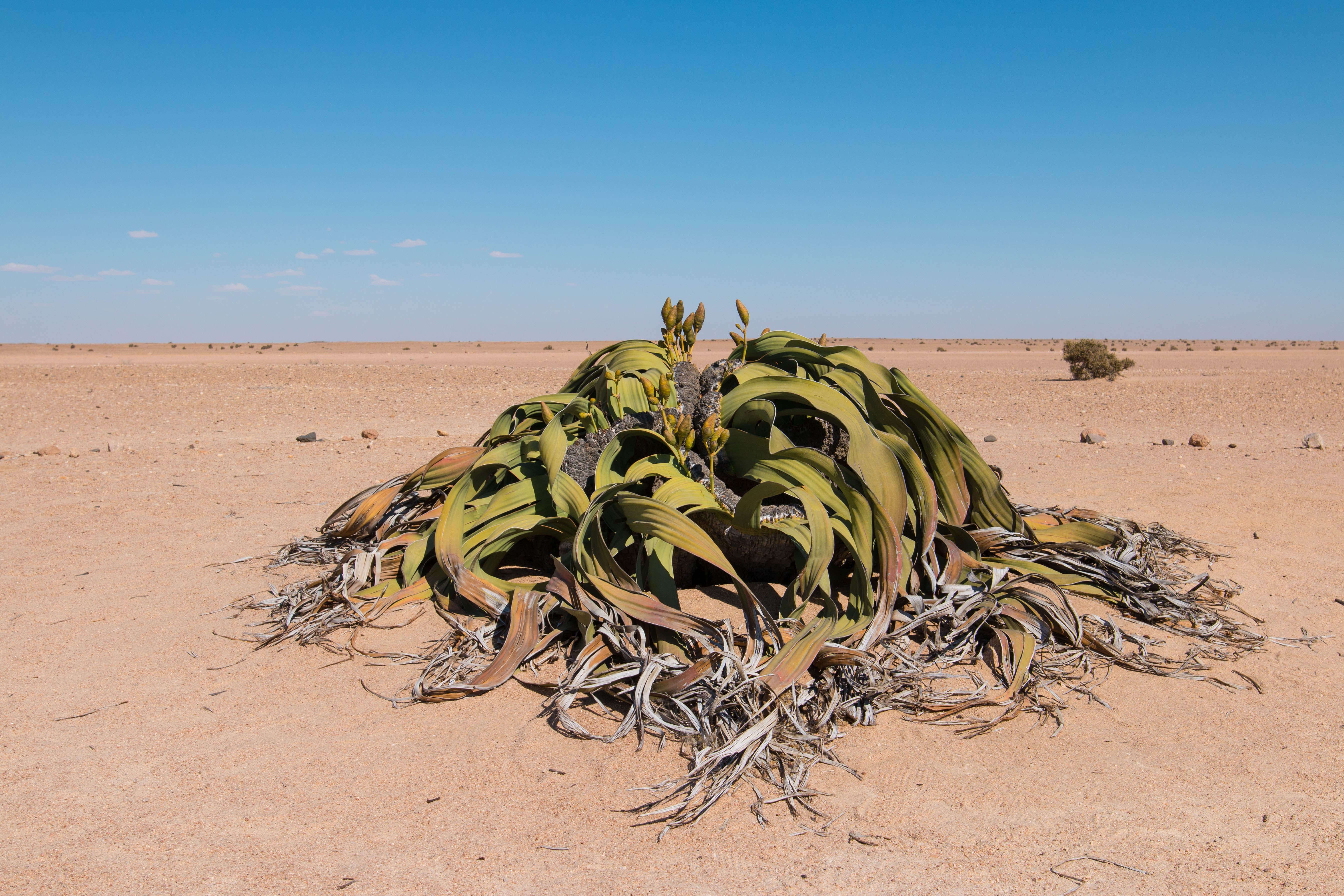Welwitschia, << wehl WIHCH ee uh, >> also called tumboa, is a peculiar plant that grows in the sandy deserts of southwestern Africa. The Welwitschia resembles a giant, flattened mushroom. Its short, woody trunk rises from a large taproot and spreads like a tabletop to a width of 5 to 6 feet (1.5 to 1.8 meters). The plant bears a single pair of leathery, green leaves that spread over the ground. The leaves are 2 to 3 feet (61 to 91 centimeters) wide and often twice as long. They grow in length for the life of the plant. Older plants appear to have many leaves because hot winds, blowing sand, and age split the two leaves into long, ribbonlike shreds.
Each year, stiff, jointed stemlike growths from 6 to 12 inches (15 to 30 centimeters) long develop at the point where the leaves join the trunk. These growths bear small, erect flower spikes called cone clusters. Welwitschia plants are either male or female. Male plants produce small cones. Female plants bear larger cones that are bright scarlet. The cones are pollinated by insects. Welwitschia plants grow slowly and often live 1,000 to 2,000 years. The plant was named for Friedrich Welwitsch, an Austrian botanist of the 1800’s.

